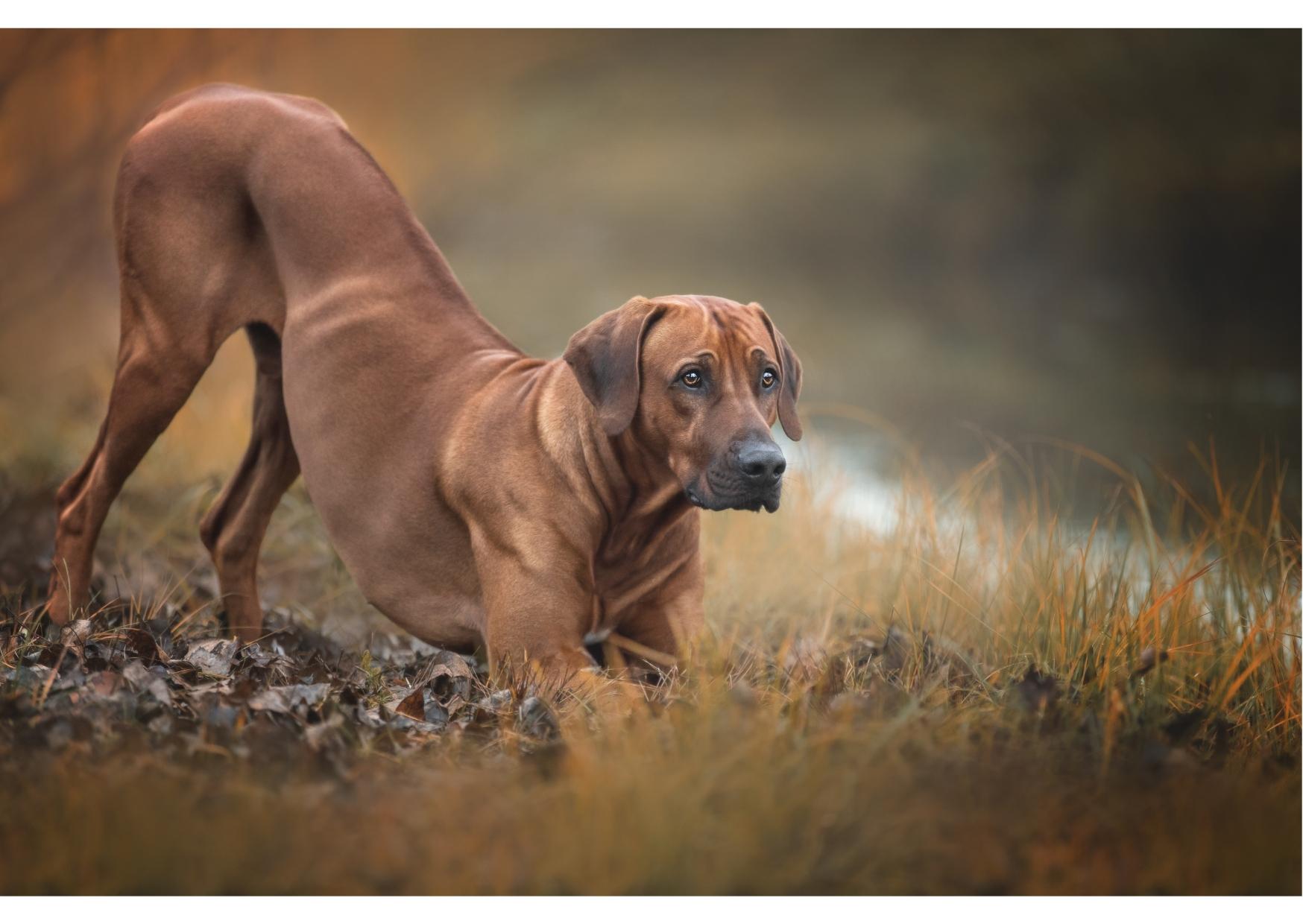RHODESIAN RIDGEBACK
| Group: | Hound |
|---|---|
| Size: | Large |
| Temperament: | Dignified, Affectionate and Patient |
| Height: | 25-27 inches (male), 24-26 inches (female) |
| Weight: | 32-40 Kg (male), 29-33 Kg (female) |
| Life Expectancy: | 10-12 years |
| Origin: | Zimbabwe |
| Coat Length: | Short |
| Coat Type: | Smooth |
| Color: | Light Wheaten Red Wheaten Wheaten Light Wheaten Black Nose Light Wheaten Brown Nose Red Wheaten Black Nose Red Wheaten Brown Nose Wheaten Black Nose Wheaten Brown Nose |
About
The Rhodesian Ridgeback is a versatile hound with a ridge, or stripe of backward-growing hair, on his back. Ridgebacks are now treasured household dogs whose owners must be prepared to deal with their independence and high hunting drive. Ridgebacks have a lot of dog beneath their signature ridge: they are swift and powerful athletes. The formidable Ridgeback may be stubborn, determined, and even authoritarian. They are faithful friends that keep an eye on their loved ones and are affectionate with those they trust. Yet, a Ridgeback may be too much for a beginner dog owner.
Nutrition
Rhodesian Ridgebacks are a typically hungry breed that loves to eat due to their enormous size and high levels of activity. The disadvantage of their insatiable hunger is that they will eat nearly anything you put in front of them, whether it is healthy or not. Ridgebacks will get enough protein from meat and fish to support their growth, repair, and development. Fat is also significant since it may be used as a concentrated source of energy, which is critical for Ridgebacks. Minerals and vitamins are also necessary for bone, skin, and coat health. At all times, clean, fresh water should be provided.
Ideal Meal Breakdown
Protein
33
Fat
17
Carbohydrates
42
Others
8
Exercise
Strong, athletic Rhodesian Ridgebacks need a moderate amount of exercise, and when given daily outings like long walks and playtime with their owner, they can adapt well to a variety of living situations. They enjoy running and require exercise to stay wholesome and content. By taking part in dog sports like tracking, agility, and other activities that dog and owner can enjoy together, the breed can also exercise mind and body.
Grooming
The Rhodesian Ridgeback sheds a little bit, but overall he requires very little grooming. An occasional bath will keep the Ridgeback clean and looking his best. A regular weekly brushing will help to remove loose hair and keep the coat glossy. If the nails don't naturally wear down, they should be regularly trimmed because excessively long nails can make a dog uncomfortable and make it difficult for it to run and walk. Many Ridgebacks object to having their nails clipped, while others react better to having their nails ground.
Training
Rhodesian Ridgebacks should always be in a secure enclosed area when off leash due to their extremely strong prey drive. The Ridgeback needs to reside indoors with his human family because he is a devoted companion. They need to be trained with a firm but gentle hand starting at a young age because they can be strong-willed, independent, and occasionally domineering. Positive reinforcement puppy training classes and early socialisation help to ensure that the dog matures into a well-adjusted, well-mannered companion.
Health
There are no severe health issues with Rhodesian Ridgebacks. Some of the common health concerns in Rhodesian Ridgebacks include hip and elbow dysplasia, hypothyroidism, dermoid sinus, and certain cancers. Regular veterinarian examinations, good diet, and exercise can all aid in the prevention and management of these problems. Ridgebacks are energetic dogs who require a lot of exercise to keep their physical and mental health in check.
History
Boer farmers in South Africa created the Rhodesian Ridgeback, formerly known as the African Lion Hound. The farmers required a multi-purpose hunting dog that could withstand the harsh conditions and terrain of the bush, endure when water supplies were scarce, guard property, and be a family member. The dogs were initially mostly employed by the Boers to flush partridge or bring down a wounded buck. When big-game hunting gained popularity, they discovered that the dogs were perfect for riding alongside them while they pursued lions. Until the hunters showed up, the dogs would keep the lion at bay. They began by mating a native dog kept by the pastoral Khoikhoi people with dogs they had brought from Europe, such as Great Danes, Mastiffs, Greyhounds, and Bloodhounds. Breeders discovered that hybrids with this specific hair ridge frequently turned out to be superior hunters. They were the ancestors of the modern Rhodesian ridgeback.
